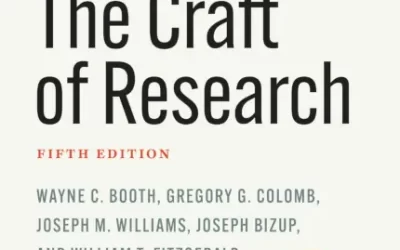At first glance, copy editing and proofing might seem like very similar tasks—and they do, indeed, have plenty in common. But a copy editor with a sharp eye for detail will recognize that these are entirely separate processes with entirely separate skill sets.

On the one hand, copy editing jobs focus on meticulously reading every single sentence in an article or book, keeping a close eye on style guide adherence, grammar nuances, and sentence structure. In proofing, meanwhile, the emphasis shifts to focusing on design and layout problems, along with glaring major typographical errors and/or spelling and grammar issues—the nuances that are important during copy editing are, at the proofing stage, much further on the back burner.
During the copy editing process, the editor’s major attention should be focused on the following:
Flow of ideas:No one likes a finished product with choppy or run-on sentences everywhere. So, it is the copy editor’s responsibility to make sure the ideas in the article, book, ormanuscript are easy for a reader to follow. It is important to pay attention to this element during the copy editing process and not wait until it’s time to proof—by then, generally speaking, it’ll be far too late in the game to make significant changes in this area. (Source: How to Copy Edit: A Guide to Copy Editing Everything – 2024 – MasterClass)
Factual accuracy. Depending on the project, the copy editor might be tasked with different types of fact-checking during a copy editing job. For example: Do dates of events listed make sense? Are brand names correctly trademarked? Are proper names of people and places listed correctly? All of these items will possibly be on a copy editor’s checklist—they should not wait until the proofing stage.
Readability and voice. Even authors with decades of experience will sometimes create first drafts that are difficult to read or comprehend in spots—and that’s where a skilled copy editor comes in. But there’s a fine line between making the author’s work more comprehensible and eliminating his or her intended voice entirely; the work, after all, belongs to the author and not the copy editor! So, the best copy editors will know how to walk that tightrope and make the author’s ideas clearly legible without wiping out the voice he or she wants to convey. And this process, of course, must be considered during a copy editing job; it cannot wait until the proofing phase of the project. (Source: What is Copy Editing? | William Allen White School of Journalism and Mass Communications (ku.edu))
…Then, at proof, the editor should turn his or her attention to these elements instead:
Layout problems: During a copy editing job, the physical layout of the book or article will most likely not be available just yet. So, during the proofing stage, it’s up to the proofreader to catch any visual cues indicating a possible problem with how the layout is presented. This could include, for instance, extra (or not enough) white space between lines, letters placed too close together, heading levels not correctly appearing, etc. “Running heads” and/or “running feet” (meaning words placed in small text at the top or bottom of an article or book) not appearing correctly is another common layout problem that should be carefully checked during the proofing stage.
Placement and formatting of call-out sentences: Some copy editing jobs might actually require choosing “call-out” sentences for articles—that is, summary sentences that are placed in large text to draw a reader’s attention—during the copy editing process. But even if this is the case, the exact visual placement won’t be known until the article proof comes in. So, this is the time to make sure the way it is placed lines up with the formatting guidelines. It’s also the time to make sure the formatting is correct. For example, if call-outs should be styled in bold/italic print or with quotation marks, the proofing stage is the place to watch out for this and make sure it is correctly done. (Source: Copy Editing vs. Proofreading: What’s the Difference?| Grammarly; Quick Guide to Proofreading | What, Why and How to Proofread (scribbr.com))
Appearance of visual aids: Many copy edited projects include visual materials, such as figures, schemes, and tables. During the copy editing stage, the copy editor will be tasked with making sure all spelling and style guide points within those visual elements are in tip-top shape. But it’s during the proof stage—and once the finalized layout is available, as previously mentioned—when the proofreader must ensure correct placement and formatting of both the visual aids themselves, along with any captions that they might include. (Source: Quick Guide to Proofreading | What, Why and How to Proofread (scribbr.com))
There are certain elements the editor must be watching for during both copy editing and proofing, such as:
Style guide points: Adherence to the style guide should, obviously, be a top priority for the copy editor—and at least in theory, most issues related to the style guide should be resolved during the copy editing stage. The proofreader, however, must still watch for major issues related to the project style guide and correct them accordingly. (Source: What is Copy Editing? | William Allen White School of Journalism and Mass Communications (ku.edu))
Typos and grammar errors: Ideally, spelling (including typos) and grammar mistakes are at the top of the list of items that copy editors should be on the lookout to fix. Realistically, though, a few might still slip through the cracks—and that’s where the proofreader’s second set of eyes comes in handy. (Sources: What is Copy Editing? | William Allen White School of Journalism and Mass Communications (ku.edu); Copy Editing vs. Proofreading: What’s the Difference?| Grammarly; Free Proofreading Tool and Tips (grammarly.com))
Reference formatting: This one can be a bit tricky, because adhering to a particular reference format—such as AP, AMA, or Chicago—should be the copy editor’s job. But because reference formatting can be nuanced, there are bound to be some lingering stylistic problems that may still exist at the proofing stage (although in theory, they should be relatively few and far between by that point). The proofreader, therefore, should be the one to catch and correct those remaining stylistic inconsistencies. In addition, larger reference problems—such as internet URLs leading to the wrong page, or elements being missing entirely (such as page ranges being left out if required)—could also be on the proofreader’s list of tasks.
Neither copy editing nor proofing is a skill that can be developed overnight—both require practice and frequent repetition to master. And it also takes time and practice to get a firm grasp on the similarities and differences between the two skills.
…But the best way to learn is by doing—and getting the hang of it, with time, is not nearly as tough as it seems!
By: Anne Brenner
Anne is a Managing Editor at Technica Editorial




